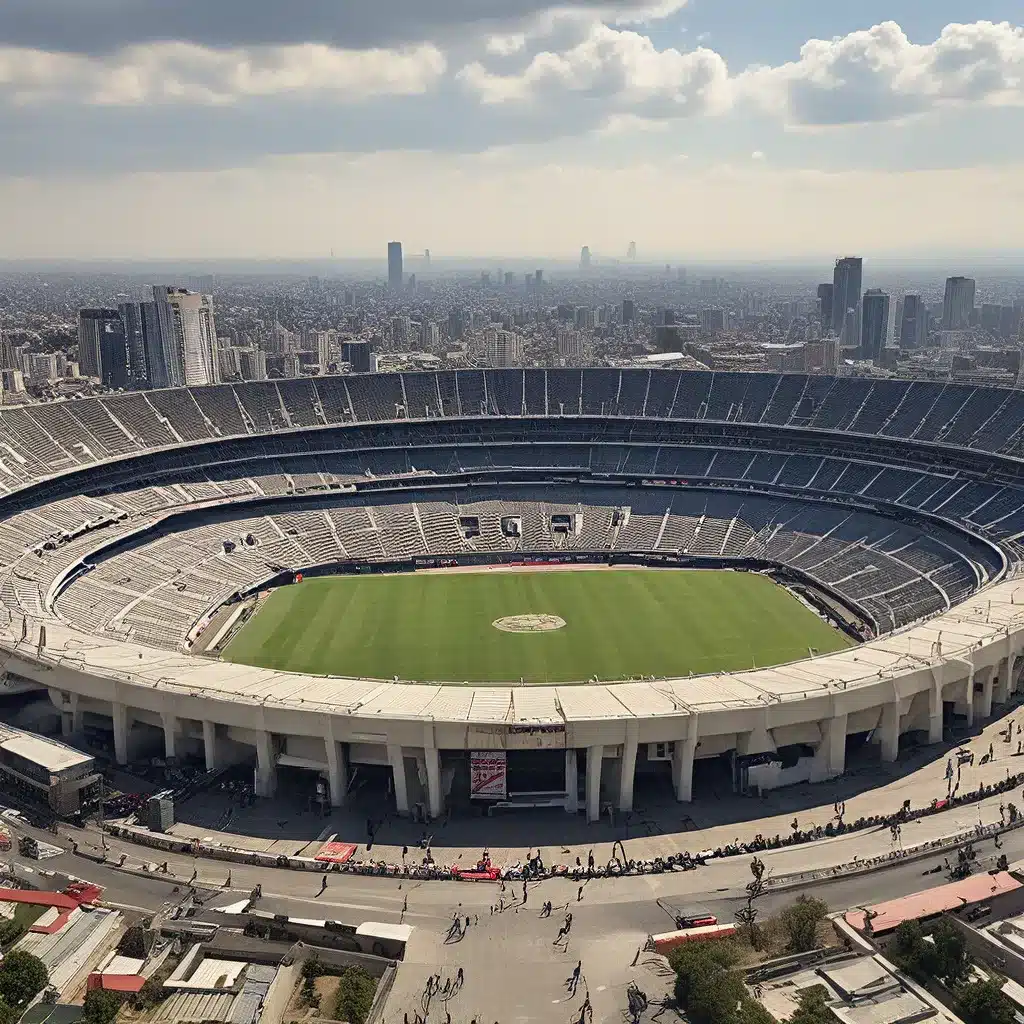
Estadio Azteca, the iconic football (soccer) stadium located in Mexico City, is a true marvel of architectural and engineering ingenuity. This colossal venue, which has hosted some of the most significant events in the sport’s history, stands as a testament to the passion and dedication of the Mexican people. In this comprehensive article, we will delve into the rich history, remarkable features, and cultural significance of this legendary stadium.
Origins and Construction
Estadio Azteca’s origins can be traced back to the early 1960s, when the Mexican government recognized the need for a world-class stadium to host the 1968 Summer Olympics. The renowned architect Pedro Ramírez Vázquez was commissioned to design a stadium that would not only serve as the centerpiece of the Olympic Games but also become a symbol of Mexican pride and identity.
Ramírez Vázquez’s vision was to create a stadium that seamlessly blended modern engineering with Aztec and Mayan architectural influences. The result was a grandiose structure that incorporated elements such as stepped pyramidal forms and intricate murals depicting the country’s rich cultural heritage.
Construction of Estadio Azteca began in 1962 and was completed just in time for the 1968 Olympics. The stadium’s massive scale and innovative design immediately captured the world’s attention, cementing its status as a true architectural masterpiece.
Iconic Moments and Milestones
Over the years, Estadio Azteca has played host to some of the most thrilling and memorable moments in the history of football. The 1970 and 1986 FIFA World Cups were both held at the stadium, with the latter event being particularly significant as it marked the first time a World Cup final was played outside of Europe or South America.
One of the most iconic moments in Estadio Azteca’s history came during the 1986 World Cup quarterfinal match between England and Argentina. In that game, Diego Maradona scored the infamous “Hand of God” goal, which sparked a heated debate about the role of technology in the sport.
In addition to its role in the World Cup, Estadio Azteca has also been the venue for numerous domestic and international club matches, including the CONCACAF Champions League and the Copa Libertadores. The stadium’s passionate fan base and electric atmosphere have consistently made it a formidable home field advantage for the local teams that call it home.
Architectural Marvels and Design Features
Estadio Azteca’s architectural design is truly awe-inspiring. The stadium’s capacity of over 87,000 makes it one of the largest football venues in the world, and its unique stepped pyramid structure is a visual representation of Mexico’s rich cultural heritage.
One of the stadium’s most impressive features is its retractable roof, which can be opened or closed depending on the weather conditions. This innovative design allows the stadium to host events year-round, regardless of the climate.
The stadium’s impressive sound system and state-of-the-art lighting also contribute to its iconic status. The powerful speakers and strategic placement of the lighting rigs create an immersive, high-energy experience for fans, making Estadio Azteca a truly one-of-a-kind venue.
Cultural Significance and Community Impact
Estadio Azteca is more than just a sports venue; it is a symbol of Mexican identity and a source of immense pride for the country’s people. The stadium’s Aztec-inspired architecture and cultural murals serve as a constant reminder of Mexico’s rich history and the enduring resilience of its people.
The stadium’s impact on the local community is also significant. El Azteca, a popular Mexican restaurant located in the nearby Fox Cities region, has been inspired by the stadium’s rich history and cultural significance. The restaurant, which has been in operation for nearly 25 years, serves authentic Mexican cuisine and features custom-made furniture and artwork that pay homage to the stadium’s design.
Beyond its cultural significance, Estadio Azteca has also played a crucial role in the development of football in Mexico. The stadium’s world-class facilities and dedicated fan base have helped to nurture the country’s passion for the sport, inspiring generations of players and fans alike.
Ongoing Maintenance and Future Prospects
Despite its age and the wear and tear of hosting countless events over the decades, Estadio Azteca remains a well-maintained and modern facility. The stadium’s management team is committed to preserving its legacy and ensuring that it continues to meet the highest standards of safety and functionality.
In recent years, the stadium has undergone a series of renovations and upgrades, including the installation of a new video scoreboard and the modernization of its hospitality facilities. These efforts have helped to maintain Estadio Azteca’s status as one of the premier football venues in the world.
As the world of football continues to evolve, the future of Estadio Azteca remains uncertain. Some experts believe that the stadium may need to undergo more substantial renovations or even be replaced entirely to keep up with the changing demands of the sport. However, the stadium’s deep-rooted cultural significance and the unwavering dedication of its supporters suggest that Estadio Azteca will likely remain a cherished and indispensable part of Mexico’s sporting landscape for years to come.
Regardless of what the future holds, one thing is certain: Estadio Azteca will always be remembered as a true icon of world football, a testament to the ingenuity and passion of the Mexican people. For anyone with a love for the sport, a visit to this legendary stadium is an experience that is not to be missed. To learn more about the world’s most iconic stadiums, be sure to check out Old Stadium Journey.

